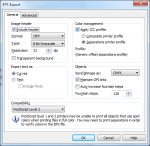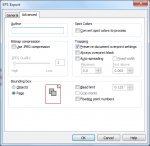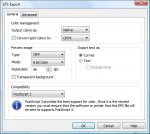noboost4you
Member
Hi,
Let me first introduce myself; I'm Bryan and I/we have no experience in the printing industry other than hitting Ctrl-P on the office laser. However, we have recently purchased a couple big ticket items to bring a few items we used to outsource, in-house: Mimaki UJF 3042FX and X-Rite 528.
The Mimaki is used for printing on our product and the X-Rite was for checking to ensure the colors we input into Corel and printing correctly on the substrate. This is where the machines are smarter than us.
No matter what we do, the Pantone color we input into Corel and print through the Mimaki does not translate to the substrate according to the X-Rite 528.
For example, printing Pantone 186C, X-Rite matches 200C at Delta E: 2.37. However, if we print Pantone 1788C, the X-Rite will then read 186C with Delta E: 1.62. This is a horrific band aid and extremely time consuming.
Our substrate is white. We even tried printing on standard white printer paper and the colors don't match up. We've calibrated the X-Rite per their standard and every 24 hrs.
This seems like a loaded question, but what are we doing wrong? I'm game to try anything as long as the Pantone color we input into Corel is what the X-Rite measures once it has been run through the Mimaki UJF-3042FX.
Thanks,
Bryan
Let me first introduce myself; I'm Bryan and I/we have no experience in the printing industry other than hitting Ctrl-P on the office laser. However, we have recently purchased a couple big ticket items to bring a few items we used to outsource, in-house: Mimaki UJF 3042FX and X-Rite 528.
The Mimaki is used for printing on our product and the X-Rite was for checking to ensure the colors we input into Corel and printing correctly on the substrate. This is where the machines are smarter than us.
No matter what we do, the Pantone color we input into Corel and print through the Mimaki does not translate to the substrate according to the X-Rite 528.
For example, printing Pantone 186C, X-Rite matches 200C at Delta E: 2.37. However, if we print Pantone 1788C, the X-Rite will then read 186C with Delta E: 1.62. This is a horrific band aid and extremely time consuming.
Our substrate is white. We even tried printing on standard white printer paper and the colors don't match up. We've calibrated the X-Rite per their standard and every 24 hrs.
This seems like a loaded question, but what are we doing wrong? I'm game to try anything as long as the Pantone color we input into Corel is what the X-Rite measures once it has been run through the Mimaki UJF-3042FX.
Thanks,
Bryan

















